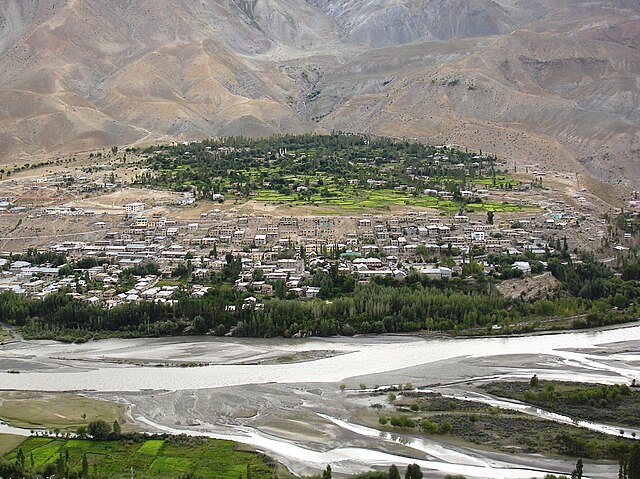The Kargil War, also known as the Kargil conflict,[note (I)] was fought between India and Pakistan from May to July 1999 in the Kargil district of Jammu and Kashmir and elsewhere along the Line of Control (LoC). In India, the conflict is also referred to as Operation Vijay, which was the codename of the Indian military operation in the region. The Indian Air Force acted jointly with the Indian Army to flush out the Pakistan Army and paramilitary troops from vacated Indian positions along the LoC, in what was designated as Operation Safed Sagar.
The town of Kargil is strategically located.
Indian soldiers after winning a battle during the Kargil War
IAF MiG-21s were used extensively in the Kargil War.
Prime minister Vajpayee checking the guns captured from Pakistani intruders during Kargil war
Kargil district is a district in Indian-administered Ladakh in the disputed Kashmir-region.
It is one of the two districts comprising the Indian-administered union territory of Ladakh. The district headquarters are in the city of Kargil. The district is bounded by the Indian-administered union territory of Jammu and Kashmir to the west, the Pakistani-administered administrative territory of Gilgit–Baltistan to the north, Ladakh's Leh district to the east, and the Indian state of Himachal Pradesh to the south. Encompassing three historical regions known as Purig, Dras and Zanskar, the district lies to the northeast of the Great Himalayas and encompasses the majority of the Zanskar Range. Its population inhabits the river valleys of the Dras, Suru, Wakha Rong, and Zanskar.
View of Kargil Town
Kargil district river valleys
The Empire of King Nyimagon in Western Tibet about 975-1000 AD. The eldest son Palgyimon received the bulk of the empire under the name Maryul, based in Leh.
Kargil city at night








